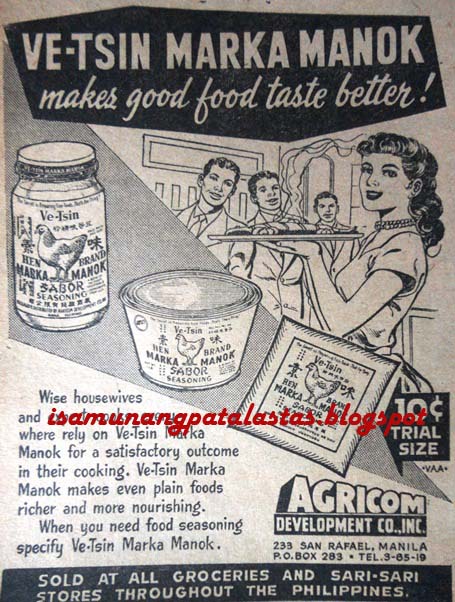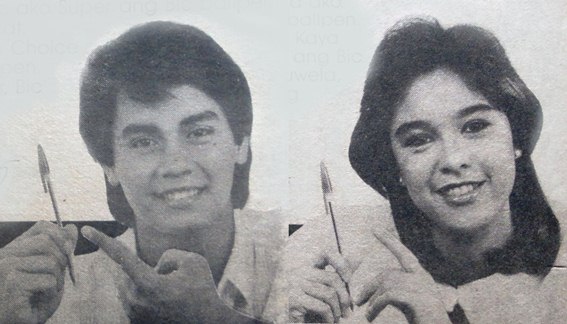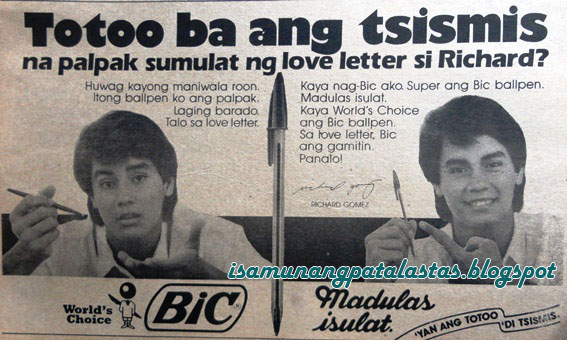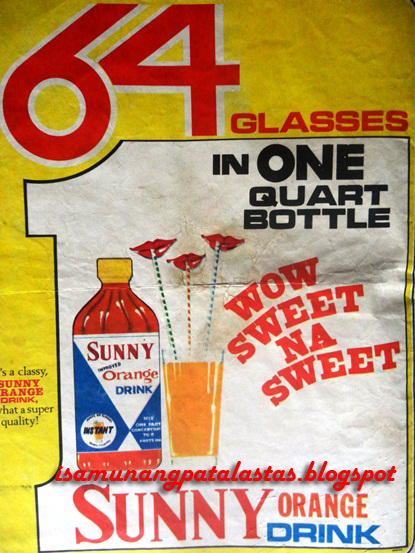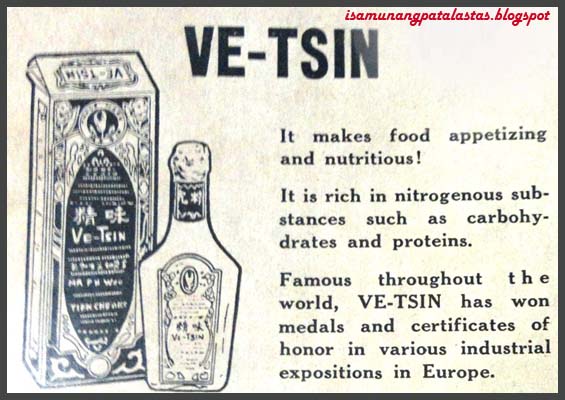 |
| VE-TSIN, as a brand name was first used by Tien Chu Ve-Tsin Mfg. Co. Ltd. in 1923 |
Monosodium glutamate was discovered by Kikunae Ikeda, a
Japanese inventor, who isolated the natural flavor-enhancing substance found in
seaweed.
MSG, as it is called, is the sodium salt of glutamic acid, also naturally occurring in molasses, cheese, mushrooms, grapes and other fruits. First commercially produced in 1908 by the Suzuki Pharmaceutical Co. in Japan as “Aji-No-Moto”, it was next introduced in Taiwan and China.
MSG, as it is called, is the sodium salt of glutamic acid, also naturally occurring in molasses, cheese, mushrooms, grapes and other fruits. First commercially produced in 1908 by the Suzuki Pharmaceutical Co. in Japan as “Aji-No-Moto”, it was next introduced in Taiwan and China.
Tien Chu Ve-Tsin Mfg. Co. Ltd., based in Shanghai and
Hong Kong, was a well-known manufacturer of honey by-products, food chemicals and additives. It also became
a pioneering maker of MSG in China in 1923.
MSG in Mandarin was called “wèijīng” ( 味精),
transposed into the Romanized version as “ve-tsin”. Tien Chun’s vet-sin product
became so popular that the product was sold abroad as Ve-tsin Gourmet
Powder—with just a sprinkling enough to bring out the flavor of food. The
product was even awarded a Gold Prize at the 1933 World's Fair in Chicago,
U.S.A.
Chinese stores in Manila began carrying the
Tien Chu Vet-Sin brand as early as the 1930s. One Chinese store along Calle Poblete-- Ow Yong Pun
Shek—carried the brand and advertised it on leading magazines of the day. Filipinos took to using the flavor enhancer
which became a kitchen staple in almost every home.
In the early 50s, other Vet-Sin brands became
available, like “Markang Manok” (Hen Brand), a more affordable powder seasoning
that came in bottles, bowls and trial size sachets. It was packaged and
distributed by Agricom Devpt. Co. Inc.
In 1958, Aji-No-Moto, the original MSG set up
its operations in the Philippines and in
a few years, became a dominant MSG leader, practically wiping out competition
and practically monopolizing the market.
Though Aji-No-Moto never used “ve-tsin” in
its product descriptor (it used “food seasoning” and “glutamic acid” at the
height of the MSG heath controversy), majority of Filipino consumers always
refer to the popular Aji brand as “vetsin, betsin or bitsin”—a legacy left by Tien-Chu Ve-Tsin
Mfg. Co.--the first to use that term in their product brand name.
SOURCES:
Tien Chu Ve-Tsin: https://en.wikipedia.org/wiki/Tien_Chu_Ve-Tsin
Monosodium Glutamate: https://en.wikipedia.org/wiki/Monosodium_glutamate
Photo of old Ve-Tsin
bottle: https://www.flickr.com/photos/kattebelletje/2812928241
, uploaded by
kattebelleje.
Delicious Living: https://www.deliciousliving.com/health/nutrition/brief-and-interesting-history-msg/



